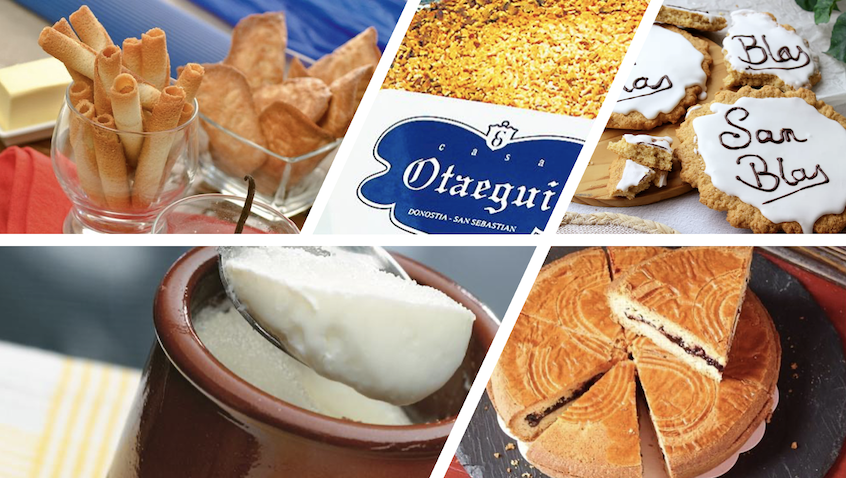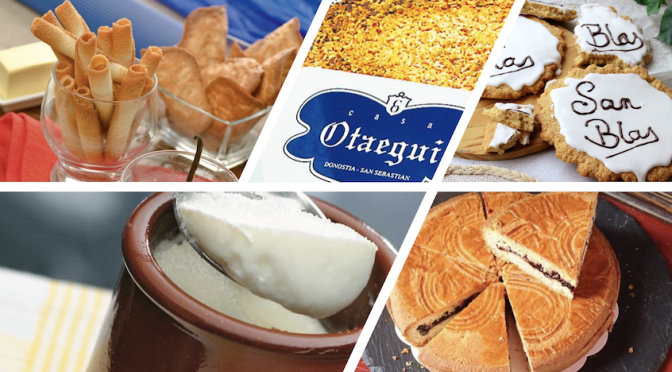The holidays are upon us. Time to gather with family and friends, to take a break from all of the worries and responsibilities of work and school. And to eat! There always seem to be tables full of food everywhere we go, especially desserts! My mom always has a flan and often rice pudding on her table. In addition to the myriad of other wonderful things she makes, my wife has made natillas and the ubiquitous burnt Basque cheesecake a few times. If you are looking for something just a little different, here is a list of traditional Basque desserts, originally compiled by El Diario Vasco. What is your favorite Basque dessert?
For the record, I love most every dessert, which is a blessing and a curse. Whenever we visit the Basque Country, everyone is so full at the end of each meal that they struggle with the dessert, except for me. I always have room. And the desserts all find their way to my end of the table…

- Mamia is made from raw sheep’s milk, typically in a clay jar called a kaiku. Originally, the milk would be heated directly in the jar on the fire until it coagulates. A recipe for mamia by renowned chef Martín Berasategi can be found here.
- Talo is sort of a corn pancake, like a corn tortilla. Normally not sweet, it is typically paired with txistorra or chorizo or cheese. However, talo with chocolate – with a chocolate filling – has become popular. Reminds me of my aunt in Amorebieta who served chocolate with bread one evening for dessert!
- Cheese with membrillo is a classic. My dad, before we could get membrillo easily (my mom now makes her own), missed this so much that he would often make jam and cheese sandwiches. Membrillo is essentially a quince jelly and is ideally paired with a Basque cheese like Idiazabal. Walnuts complete the trifecta for an ideal post-dinner treat.
- San Blas cakes originated in Eibar, but are now common throughout the Basque Country. Typical of the festival associated with Saint Blaise on February 3, these cakes have a touch of anis. They have a harder glaze and are about the size of a cookie or donut.
- Tejas y Cigarrillos de Tolosa – Tiles and Cigarettes of Tolosa, though maybe a better, less literal translation would be Biscuits and Roles – are small pastries from that same Gipuzkoan city which first appeared in the twelfth century. These almond-based pastries are an ideal accompaniment with coffee. I couldn’t find a recipe in English, but here is one in Spanish.
- Can you get more Basque than a dessert called literally Basque Cake, or Pastel Vasco? Or, as it is more commonly known, Gateâu Basque. Originally from the province of Lapurdi in Iparralde, this cake can be rather dry, motivating fruit and, more recently, cream filling. However, as with any popular recipe, there are many, many variants, including some that add rum or almonds. Martín Berasategui has a recipe for this dessert as well.
- One last dessert to highlight is Pantxineta. A dessert that arose from the Otaegeui pastry shop in Donostia in 1915, it is a puff pastry dough with almonds and filled with a secret pastry cream. To enjoy the crispy crust, it is typically eaten warm. Casa Otaegui shares their recipe for pantxineta on their website.
Primary source: Los 8 postres vascos más típicos, El Diario Vasco.
Discover more from Buber's Basque Page
Subscribe to get the latest posts sent to your email.



Thanks Blas, went to the Sheepherder’s Ball last night and today Im making membrillo. Someone gave me 5 gallons of quince yesterday!
WOW, 5 gallons of quince!!! Lucky you.
Thank you for the post!!!
I bake a gateau Basque often–with cream, almond cream, cherries or rum. It is grey and cold–I should make you today.
5 gallons of quince!!! Here, 1 quince cost $2!!
Monique
Great post, Blas! In the fall I search “quince” in sites like Craigslist & NextDoor and almost always find people with yard trees offering fruit for free. (A frugal Basko? I know I’m not alone!)
If they aren’t going to use them…!